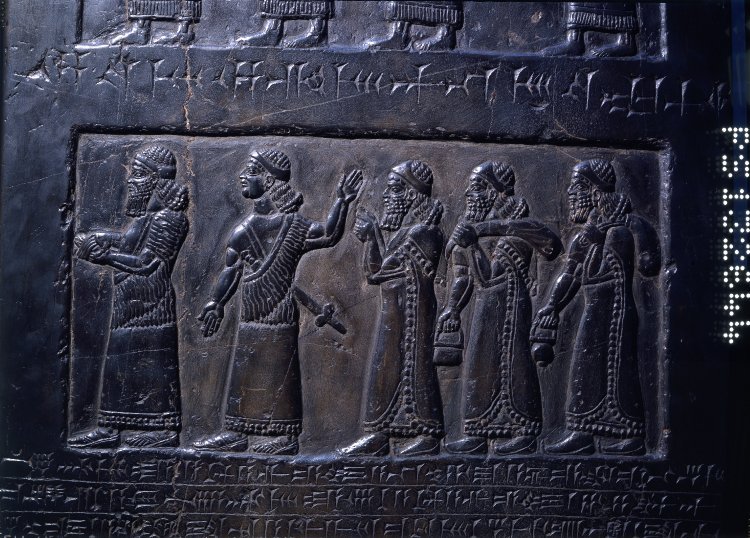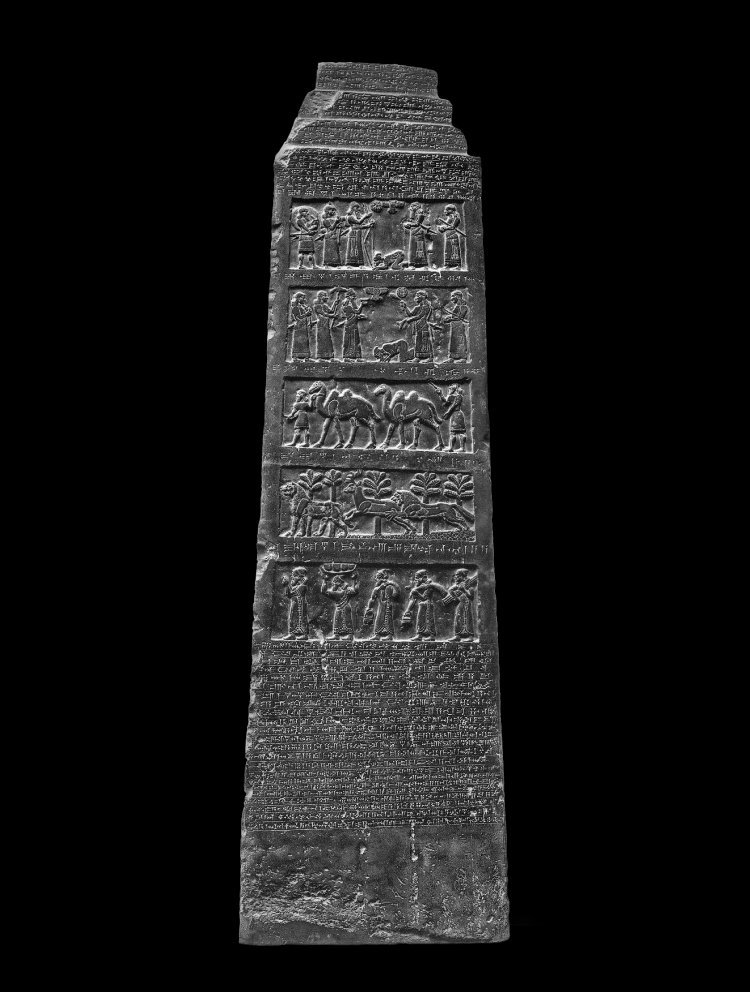MessageToEagle.com – The Black Obelisk of Shalmaneser III is limestone monument that celebrates thirty-one successful years of military campaigns by king Shalmaneser III and his prominent minister.
Black Obelisk of Shalmaneser III , one of Assyria’s greatest treasures, was uncovered in 1854 by British archaeologist Austen Henry Layard.
A series of inscriptions on the obelisk are decorated with illustrations that show the ceremony of paying tribute to the king in person.
They are presented in five rows and each carved row has four panels, one on each side of the Black Obelisk. The scenes show king Shalmaneser III (858 – 824 BC) who is receiving tribute from vassals across the Assyrian empire.

The obelisk was created in 825 BC in a courtyard of a main building in Kalhu, ancient Assyrian city of Kalhu (the Biblical Calah).

At the time of the stela’s creation, Kalhu was the capital of an Assyrian empire broken apart by civil war, so maybe it was intended to remind the king’s supporters and followers of the extent of his authority and rule.
See also:
Helmet Of Meskalamdug – Sumerian King Of The First Dynasty Of Ur
Sumerian King List – Ancient Record Of Kingship That Has Long Been Of Great Interest
Sharkalishharri Cylinder Seal From The Fifth King Akkad Dynasty
Kudurru Of Melishihu – Stone Records From The Kassite Dynasty In Babylonia
During the 9th century BC, Babylonia’s neighbor Assyria enjoyed a revival of political power but abstained from encroaching on the rights of Babylonia.
In those times, Assyria had a temporary period of weakness while Babylonia was much stronger as power.
However, it is important to mention that king Shalmaneser III was the son of the famous Ashurnarsipal II, one of the great builders in Assyrian history, who took over Calah (Kalhu) and by a large construction programme, he completely transformed the city to the leading metropolis in Assyria.
After its rediscovery in 1846, the Obelisk became a museum object in London, and gained fame for depicting an Israelite king mentioned in the Christian Bible.
The obelisks richly presented details enable us to imagine the power of Assyrian empire in the west during Shalmaneser III’s long and very successful reign.
Copyright © MessageToEagle.com All rights reserved. This material may not be published, broadcast, rewritten or redistributed in whole or part without the express written permission of MessageToEagle.com







